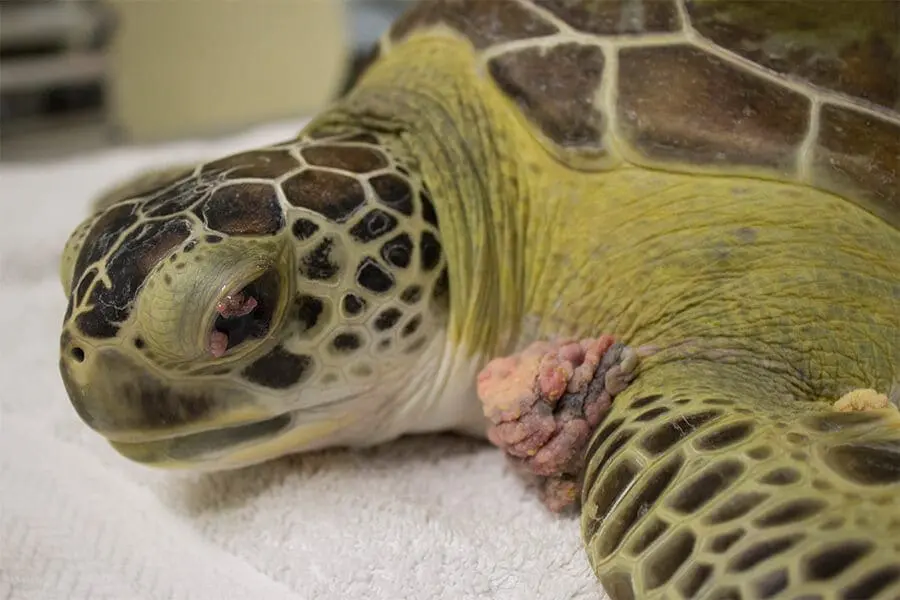

Just a few of green sea turtle Toni’s FP tumors.
Sea turtles have been swimming in the world’s oceans since the age of the dinosaurs. Today they face more threats than ever before, such as poaching, entanglement in marine debris, boat strikes and loss of nesting habitat. The effects of climate change and pollution are also weakening their immune systems, making them more susceptible to natural diseases. A common issue for local turtles brought to our Sea Turtle Healing Center is fibropapillomatosis.
This virus, abbreviated as FP, is a debilitating disease that causes external and internal tumors to grow all over a turtle’s body. These tumors can grow cumbersome enough to interfere with the turtle’s ability to swim efficiently and evade predators. Parasites are also able to take advantage of infected turtles in this weakened state. FP has been linked to water pollution and warmer temperatures, creating an especially large risk for green sea turtles because of their habitat and diet.
FP is not commonly seen outside of subtropical and tropical waters. Where there is a more degraded habitat and fewer vegetative food sources, there is a higher prevalence of FP. In addition to being detectable in the turtles themselves, the pollutants associated with this disease are found to bioaccumulate in marine vegetation, the primary food source for green sea turtles. For these reasons, FP is, unfortunately, fairly common in the Indian River Lagoon.
What We’re Doing
A typical FP patient will stay at the Healing Center for seven to eight months. Though there is no cure for this disease, FP tumors can be surgically removed. Our state-of-the-art facility is one of only six rehabilitation centers in Florida with the ability to perform such an operation.
Surgery is always a risk and several factors must be taken into account when determining whether a patient is ready to go “under the knife.” We rely heavily on blood values to help us make the decision and will only operate on turtles if they have enough red blood cells. FP tumors are vascular and blood loss is a big concern with surgery.

Healing Center staff use a laser to remove Wolverine’s FP tumors. She recovered from the procedure well.
Even after surgery, there is no guarantee tumors will not grow back, especially after the patient has been released. We can reduce the prevalence of FP locally by working to keep the Indian River Lagoon a healthy habitat. Minimize waste and runoff by following fertilizer bans, cleaning up pet waste, washing your car on your lawn instead of the driveway and properly maintaining (or replacing) your septic system.
If you’re especially passionate about sea turtles, get involved with our Restore Our Shores team! Oyster mat deployment, shell bag assembly and dockside oyster gardening all help bolster local oyster populations. In turn, these filter feeders consume large quantities of nutrients that, when left unchecked, may contribute to higher incidences of FP.